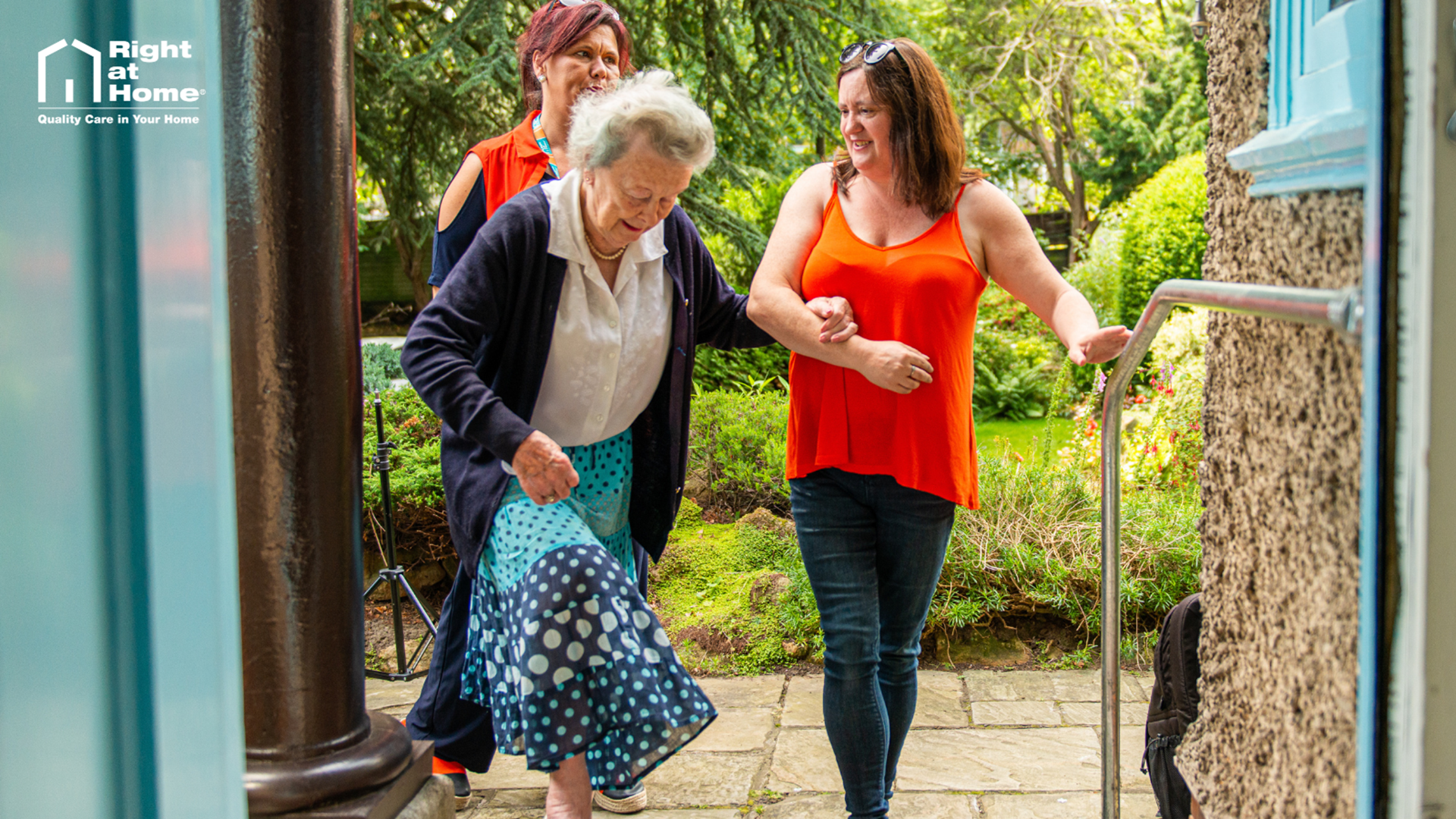The Benefits of Exercise for Those Living with Parkinson's
Simple and Effective Home Exercises
Published: 08/07/2024
Living with Parkinson's disease presents unique challenges, but incorporating regular exercise into daily routines can significantly improve quality of life.
At Right at Home Havant & Petersfield, we believe in empowering individuals with Parkinson's to live their lives to the fullest. Exercise is a crucial component of managing Parkinson's symptoms, enhancing mobility, strength, and overall well-being. Let’s explore the numerous benefits of exercise and highlight some simple yet effective exercises that can be done at home, even from the comfort of a chair.

The Benefits of Exercise for Parkinson's Disease
Improved Mobility and Balance:
Regular exercise helps maintain and improve flexibility, balance, and coordination. This is particularly important for those with Parkinson's, as the disease often affects these areas, increasing the risk of falls.
Enhanced Strength and Endurance:
Strength training exercises help in building muscle strength, which can counteract the muscle stiffness and weakness associated with Parkinson's. This, in turn, helps with everyday tasks and promotes independence.
Better Mental Health:
Exercise is known to release endorphins, which can improve mood and reduce feelings of depression and anxiety. This is especially beneficial for individuals with Parkinson's who may experience mental health challenges.
Improved Cardiovascular Health:
Cardiovascular exercises, even those that are low-impact, can enhance heart health, boost energy levels, and improve overall stamina.
Enhanced Cognitive Function:
Physical activity stimulates brain function and can help in maintaining cognitive abilities, which may be affected by Parkinson's disease.
Reduced Symptoms:
Regular exercise can help reduce the severity of Parkinson's symptoms, such as tremors, rigidity, and bradykinesia (slowness of movement).
Simple and Effective Home Exercises
Incorporating exercise into daily routines doesn't have to be daunting. Here are some simple but effective exercises that can be done at home, many of which are suitable for doing while seated:
- Seated Marching
How to do it: Sit upright in a sturdy chair. Lift your right knee as high as you can, then lower it and lift your left knee. Continue alternating knees in a marching motion.
Benefits: This exercise helps improve hip mobility and leg strength while also engaging your core muscles.
- Arm Circles
How to do it: Sit upright with your arms extended out to the sides at shoulder height. Make small circles with your arms, gradually increasing the size of the circles. After a minute, reverse the direction of the circles.
Benefits: This helps to increase shoulder mobility and strength.
- Seated Toe Taps
How to do it: Sit upright with your feet flat on the floor. Lift your toes while keeping your heels on the ground, then lower your toes and lift your heels. Alternate between toe taps and heel lifts.
Benefits: This exercise strengthens the muscles in your lower legs and improves ankle mobility.
- Chair Stands
How to do it: Sit in a sturdy chair with your feet flat on the floor. Cross your arms over your chest. Lean forward slightly and stand up slowly. Then, sit back down in a controlled manner. If needed, use the arms of the chair to assist you.
Benefits: This exercise strengthens your legs and improves your ability to stand up from a seated position.
- Seated Leg Extensions
How to do it: Sit upright with your feet flat on the floor. Straighten one leg out in front of you and hold for a few seconds, then lower it back down. Repeat with the other leg.
Benefits: This strengthens the quadriceps and improves knee joint flexibility.
- Neck and Shoulder Stretch
How to do it: Sit upright and slowly tilt your head to one side, bringing your ear toward your shoulder. Hold for a few seconds, then repeat on the other side. Next, roll your shoulders backward in a circular motion.
Benefits: These stretches relieve tension in the neck and shoulders, improving flexibility and reducing stiffness.
Conclusion
Exercise is a powerful tool for managing Parkinson's disease, offering numerous physical and mental health benefits. By incorporating simple exercises into your daily routine, you can enhance your mobility, strength, and overall well-being.
At Right at Home Havant & Petersfield, we are committed to supporting individuals with Parkinson's in leading active, fulfilling lives. Always consult with your healthcare provider before starting any new exercise regimen to ensure it is safe and appropriate for your condition.
Stay active, stay healthy, and embrace the positive impact that exercise can bring to your life.

